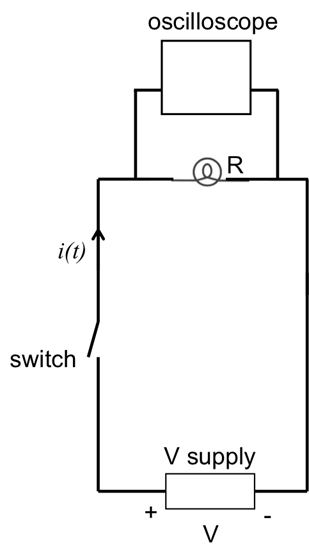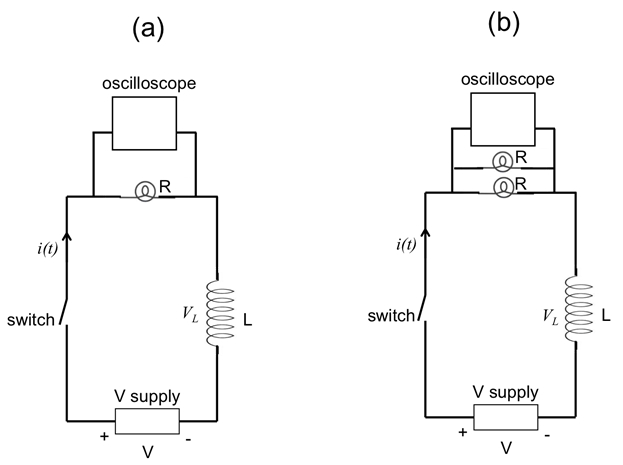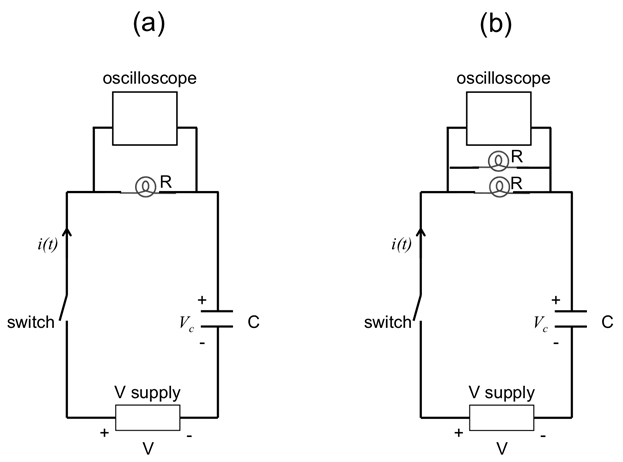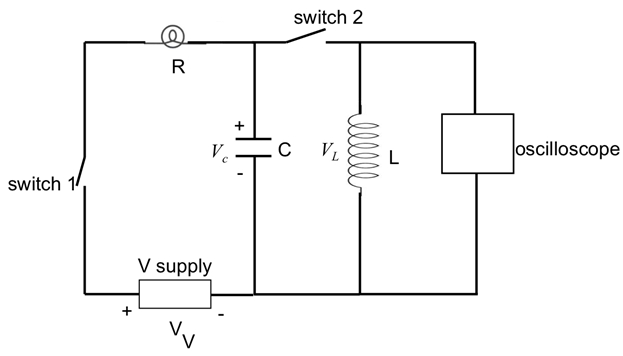RC/RL/LC Circuits
Panoramica
Source: Yong P. Chen, PhD, Department of Physics & Astronomy, College of Science, Purdue University, West Lafayette, IN
Capacitors (C), inductors (L), and resistors (R) are each an important circuit element with distinct behaviors. A resistor dissipates energy and obeys Ohm's law, with its voltage proportional to its current. A capacitor stores electrical energy, with its current proportional to the rate of change of its voltage, while an inductor stores magnetic energy, with its voltage proportional to the rate of change of its current. When these circuit elements are combined, they can cause the current or voltage to vary with time in various, interesting ways. Such combinations are commonly used to process time- or frequency-dependent electrical signals, such as in alternating current (AC) circuits, radios, and electrical filters. This experiment will demonstrate the time-dependent behaviors of the resistor-capacitor (RC), resistor-inductor (RL), and inductor-capacitor (LC) circuits. The experiment will demonstrate the transient behaviors of RC and RL circuits using a light bulb (resistor) connected in series to a capacitor or inductor, upon connecting to (and switching on) a power supply. The experiment will also demonstrate the oscillatory behavior of an LC circuit.
Procedura
1. Using an Oscilloscope
- Obtain an oscilloscope, a small light bulb (with resistance R of a few Ω), a switch, and a DC voltage supply (or alternatively a 1.5 V battery).
- Connect the circuit as shown in Figure 4, with the switch open. The connections in this experiment can be made with cables, clamps, or banana plugs into receiving ports on the instruments.
- Select the vertical scale of the oscilloscope to a range that is close to 1 V. Select the time scale
Risultati
For step 1, the light bulb will "instantly" turn on and off when closing (step 1.4) and opening (in step 1.5) the switch. Representative oscilloscope traces are shown in Figure 8.
For step 2.3, after closing the switch, it can be observed that it takes a small but noticeable amount of time for the light bulb to turn on (instead of instantly as in step 1). When two parallel light bulbs are us
Applicazione e Riepilogo
In this experiment, we have demonstrated the time dependent response (exponential turning on and off) in RC or RL circuits, and how changing the resistance affects the time constant. We also demonstrated the oscillatory response in an LC circuit.
RC, RL and LC circuits are essential building blocks in many circuit applications. For example, RC and RL circuits are commonly used as filters (taking advantage of the fact that capacitors tend to pass high frequency signals but block low frequency s
Vai a...
Video da questa raccolta:

Now Playing
RC/RL/LC Circuits
Physics II
142.7K Visualizzazioni

Electric Fields
Physics II
77.4K Visualizzazioni

Electric Potential
Physics II
104.4K Visualizzazioni

Magnetic Fields
Physics II
33.4K Visualizzazioni

Electric Charge in a Magnetic Field
Physics II
33.7K Visualizzazioni

Investigation Ohm's Law for Ohmic and Nonohmic Conductors
Physics II
26.2K Visualizzazioni

Series and Parallel Resistors
Physics II
33.1K Visualizzazioni

Capacitance
Physics II
43.7K Visualizzazioni

Inductance
Physics II
21.5K Visualizzazioni

Semiconductors
Physics II
29.6K Visualizzazioni

Photoelectric Effect
Physics II
32.6K Visualizzazioni

Reflection and Refraction
Physics II
35.8K Visualizzazioni

Interference and Diffraction
Physics II
90.9K Visualizzazioni

Standing Waves
Physics II
49.7K Visualizzazioni

Sound Waves and Doppler Shift
Physics II
23.4K Visualizzazioni



